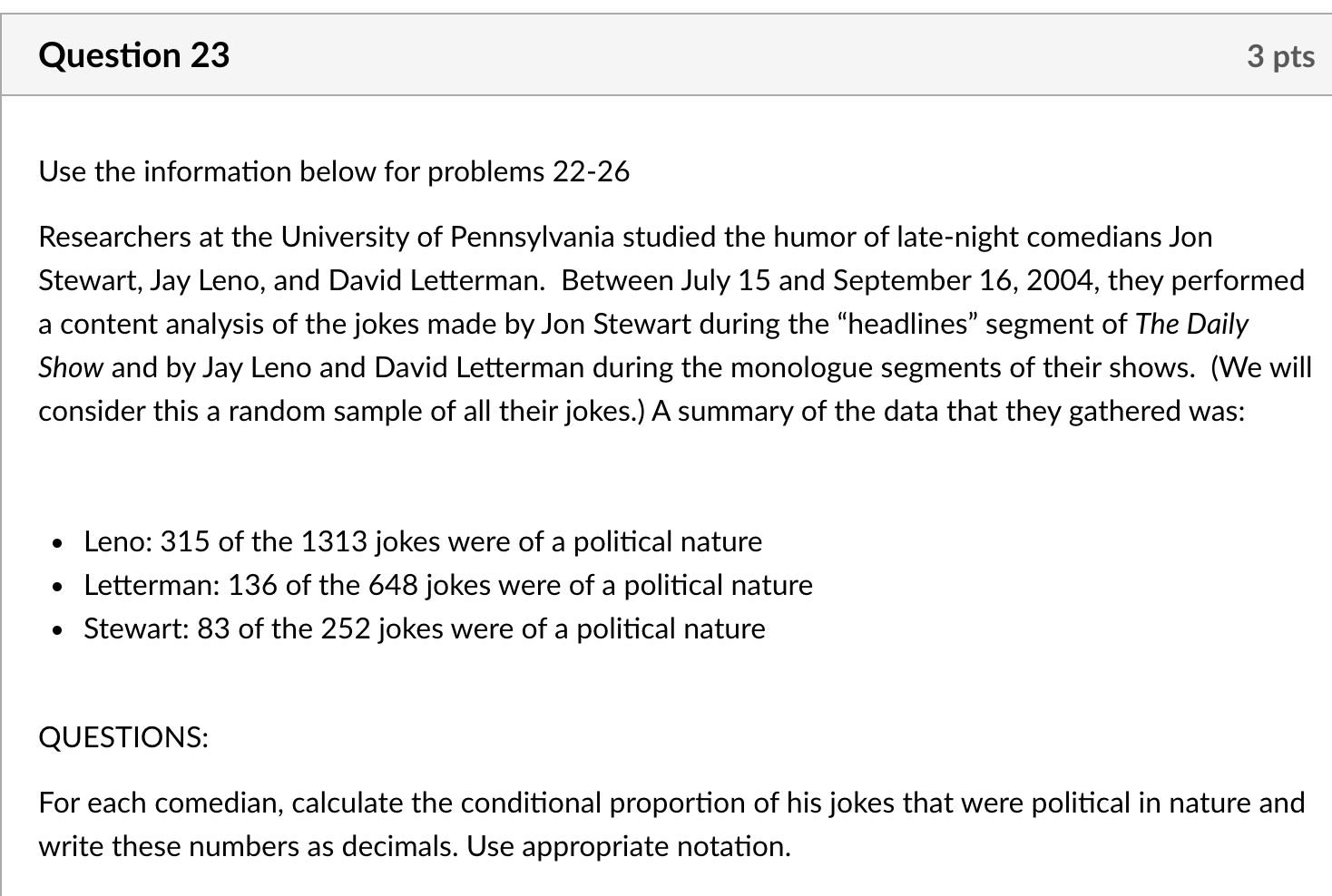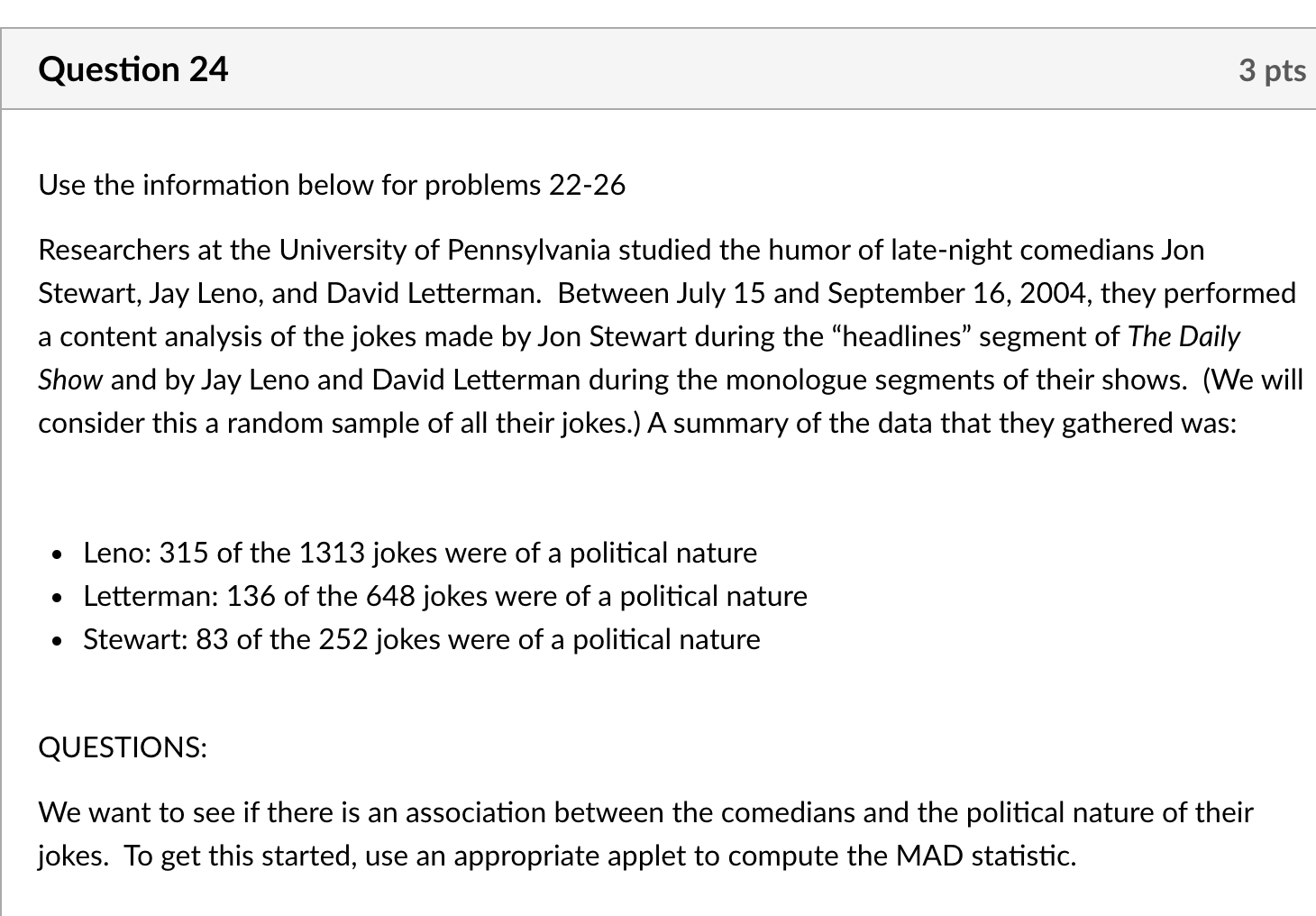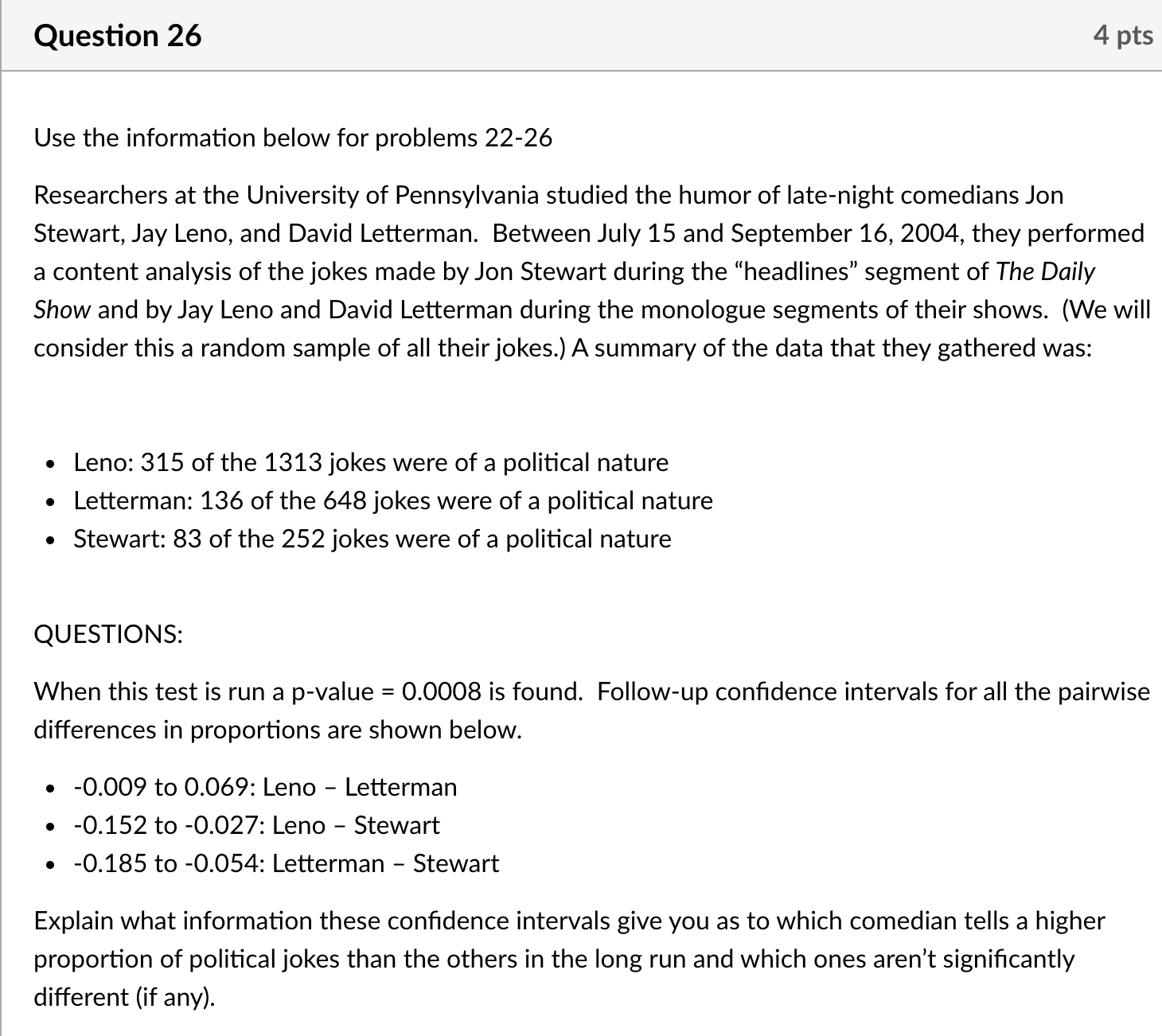Please can you help with this problem? Please use the information in 22 to answer 22 to 26. I will appreciate your help. Please I will be happy If you could put in little explanation so I can learn from it. Thank you
Question 22 4 pts Use the information below for problems 22-26 Researchers at the University of Pennsylvania studied the humor of late-night comedians Jon Stewart, Jay Leno, and David Letterman. Between July 15 and September 16, 2004, they performed a content analysis of the jokes made by Jon Stewart during the \"headlines\" segment of The Daily Show and by Jay Leno and David Letterman during the monologue segments of their shows. (We will consider this a random sample of all their jokes.) A summary of the data that they gathered was: . Leno: 315 of the 1313 jokes were of a political nature . Letterman: 136 of the 648 jokes were of a political nature . Stewart: 83 of the 252 jokes were of a political nature QUESTIONS: Organize the data into a two-way table (including totals), with the explanatory variable as the columns and the response variable as the rows. (You may copy the table below and paste it into the answer box in order to ll it, or you may use the table tool to create a table and use the one below as a template.) Question 23 3 pts Use the information below for problems 22-26 Researchers at the University of Pennsylvania studied the humor of late-night comedians Jon Stewart, Jay Leno, and David Letterman. Between July 15 and September 16, 2004, they performed a content analysis of the jokes made by Jon Stewart during the "headlines" segment of The Daily Show and by Jay Leno and David Letterman during the monologue segments of their shows. (We will consider this a random sample of all their jokes.) A summary of the data that they gathered was: . Leno: 315 of the 1313 jokes were of a political nature . Letterman: 136 of the 648 jokes were of a political nature . Stewart: 83 of the 252 jokes were of a political nature QUESTIONS: For each comedian, calculate the conditional proportion of his jokes that were political in nature and write these numbers as decimals. Use appropriate notation.Question 24 3 pts Use the information below for problems 22-26 Researchers at the University of Pennsylvania studied the humor of late-night comedians Jon Stewart, Jay Leno, and David Letterman. Between July 15 and September 16, 2004, they performed a content analysis of the jokes made by Jon Stewart during the "headlines" segment of The Daily Show and by Jay Leno and David Letterman during the monologue segments of their shows. (We will consider this a random sample of all their jokes.) A summary of the data that they gathered was: . Leno: 315 of the 1313 jokes were of a political nature . Letterman: 136 of the 648 jokes were of a political nature . Stewart: 83 of the 252 jokes were of a political nature QUESTIONS: We want to see if there is an association between the comedians and the political nature of their jokes. To get this started, use an appropriate applet to compute the MAD statistic.Question 25 3 pts Use the information below for problems 22-26 Researchers at the University of Pennsylvania studied the humor of late-night comedians Jon Stewart, Jay Leno, and David Letterman. Between July 15 and September 16, 2004, they performed a content analysis of the jokes made by Jon Stewart during the "headlines" segment of The Daily Show and by Jay Leno and David Letterman during the monologue segments of their shows. (We will consider this a random sample of all their jokes.) A summary of the data that they gathered was: . Leno: 315 of the 1313 jokes were of a political nature . Letterman: 136 of the 648 jokes were of a political nature . Stewart: 83 of the 252 jokes were of a political nature QUESTIONS: 1. If you used a theory-based test to analyze these data would you use a Chi-squared Test or an Analysis of Variance (ANOVA)? Why? 2. Would it be appropriate to carry out a theory-based analysis here? Explain why or why not.Question 26 4 pts Use the information below for problems 22-26 Researchers at the University of Pennsylvania studied the humor of late-night comedians Jon Stewart, Jay Leno, and David Letterman. Between July 15 and September 16, 2004, they performed a content analysis of the jokes made by Jon Stewart during the "headlines" segment of The Daily Show and by Jay Leno and David Letterman during the monologue segments of their shows. (We will consider this a random sample of all their jokes.) A summary of the data that they gathered was: . Leno: 315 of the 1313 jokes were of a political nature . Letterman: 136 of the 648 jokes were of a political nature . Stewart: 83 of the 252 jokes were of a political nature QUESTIONS: When this test is run a p-value = 0.0008 is found. Follow-up confidence intervals for all the pairwise differences in proportions are shown below. . -0.009 to 0.069: Leno - Letterman . -0.152 to -0.027: Leno - Stewart . -0.185 to -0.054: Letterman - Stewart Explain what information these confidence intervals give you as to which comedian tells a higher proportion of political jokes than the others in the long run and which ones aren't significantly different (if any)











